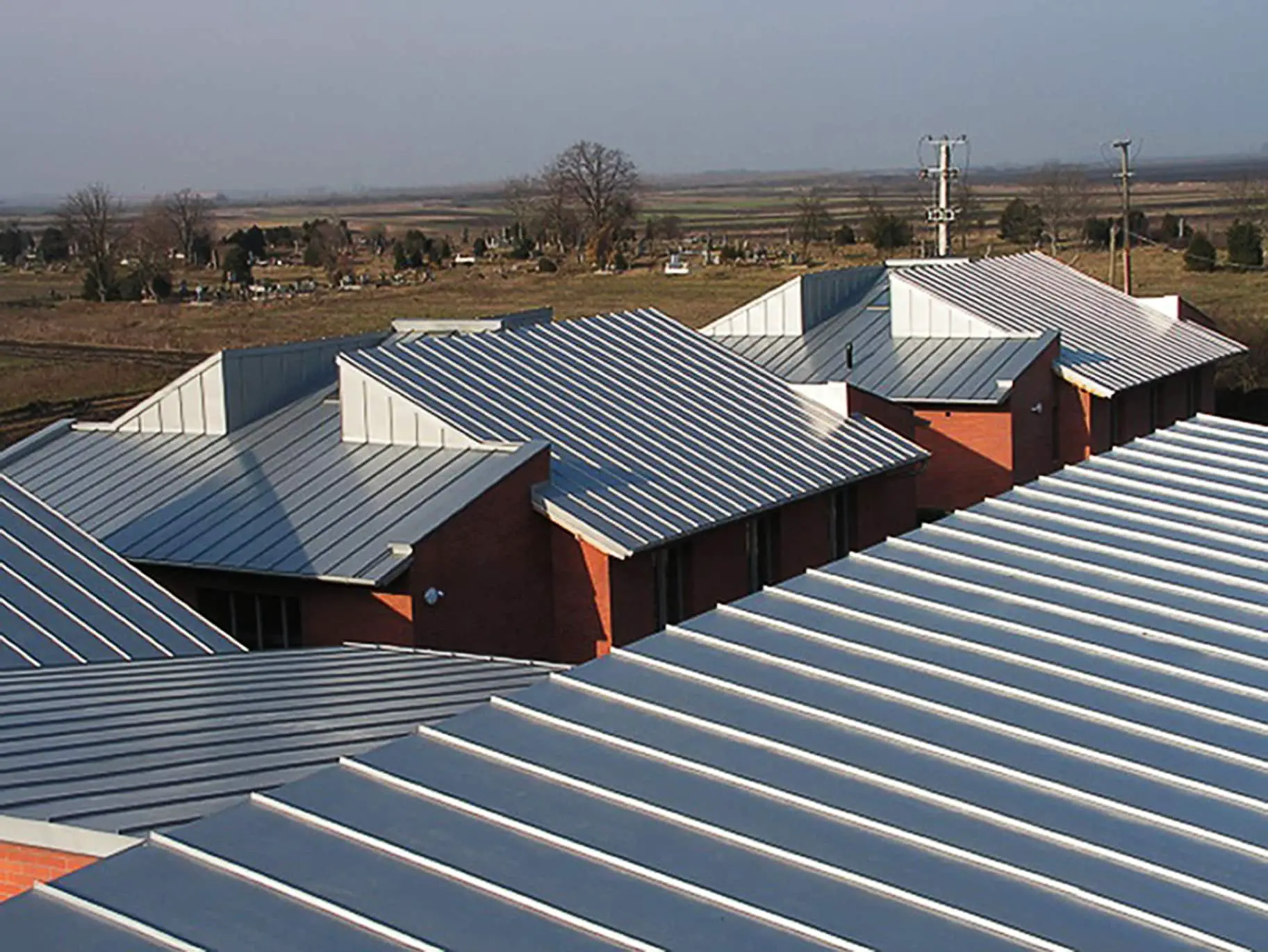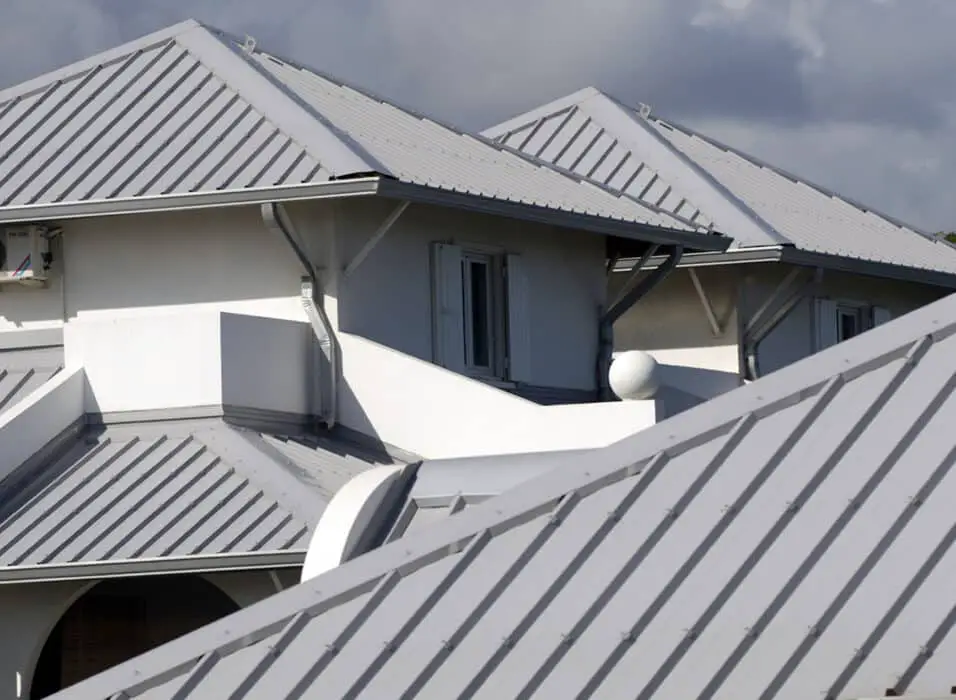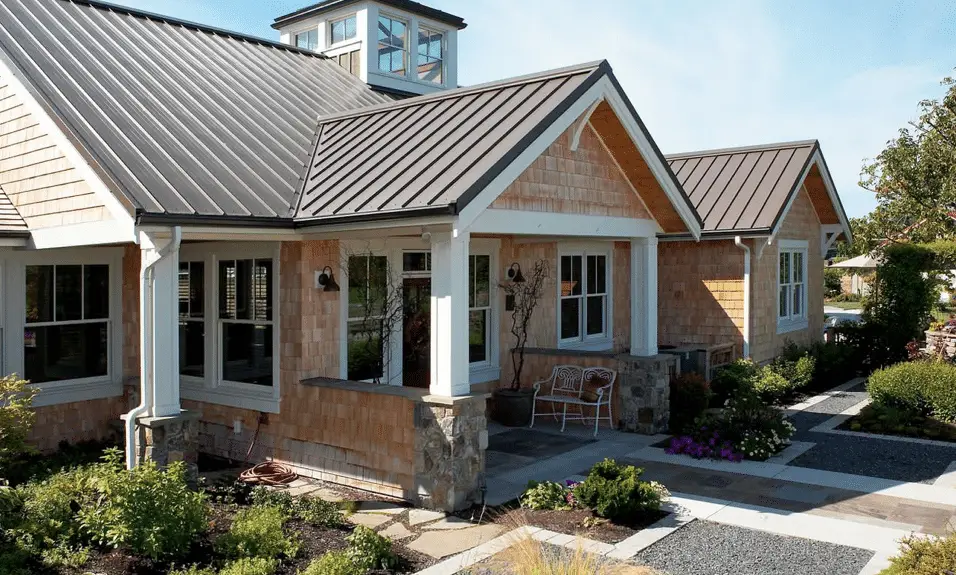How Thick Is Metal Roofing
Introduction
How Thick Is Metal Roofing: Metal roofing is a popular choice for homeowners and businesses alike due to its durability, longevity, and aesthetic appeal. Whether you are considering installing a metal roof or simply curious about its thickness, understanding the factors that determine the thickness of metal roofing is essential. In this article, we will explore the various aspects that contribute to the thickness of metal roofing and how it impacts its performance.
When it comes to metal roofing, thickness plays a crucial role in determining its strength and durability. The thickness of metal roofing is typically measured in gauge, with a lower gauge indicating a thicker sheet of metal. Common gauges for metal roofing range from 22 to 29, with 22 gauge being the thickest and 29 gauge being the thinnest. It is important to note that the thickness of metal roofing can vary depending on the specific material used, such as steel, aluminum, or copper.
Steel is one of the most commonly used materials for metal roofing due to its strength and affordability. Steel roofing panels are available in various thicknesses, with 26 gauge being a popular choice for residential applications. This gauge provides a good balance between durability and cost-effectiveness. However, for areas prone to extreme weather conditions or heavy snowfall, a thicker gauge, such as 24 or 22, may be recommended to ensure maximum protection.
Aluminum is another popular material for metal roofing due to its lightweight nature and resistance to corrosion. Aluminum roofing panels are typically available in thicker gauges compared to steel, with 0.032-inch thickness being a common choice. This thickness provides excellent durability while still maintaining a lightweight profile. Additionally, aluminum roofing is often coated with a protective layer to enhance its resistance to weathering and increase its lifespan.
Copper is a premium material for metal roofing due to its unique appearance and exceptional longevity. Copper roofing panels are typically available in thicker gauges, such as 16 or 20, to ensure maximum durability and resistance to the elements. While copper roofing may be more expensive compared to other materials, its timeless beauty and ability to develop a natural patina over time make it a sought-after choice for architectural projects and high-end homes.
The thickness of metal roofing is an important factor to consider when choosing the right material for your roofing needs. Whether you opt for steel, aluminum, or copper, understanding the different gauges available and their impact on durability and performance is crucial. By selecting the appropriate thickness for your specific requirements, you can ensure that your metal roof will provide long-lasting protection and enhance the overall aesthetics of your property.
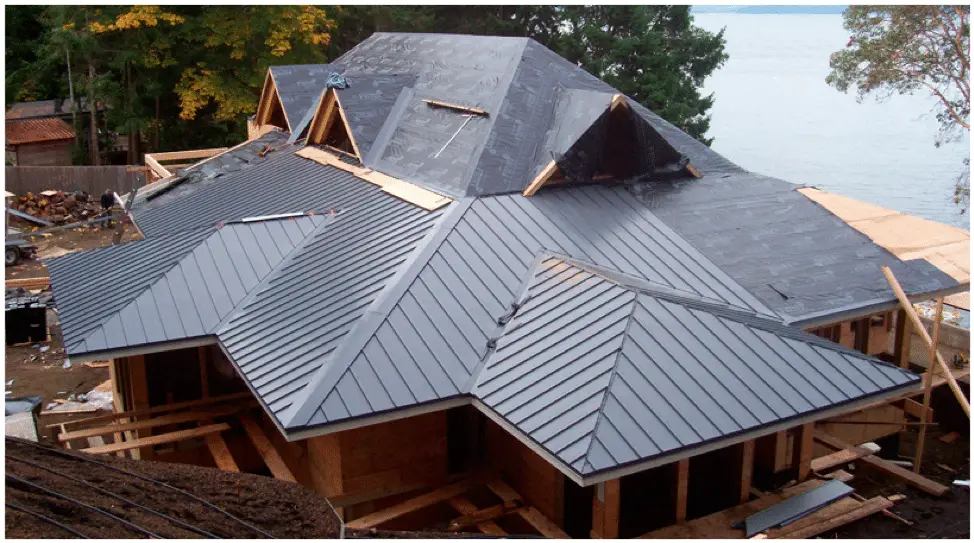
How thick is a metal roof in mm?
The thickness of 0.30 – 0.35 mm – For a small roof with purlin spacing that is not greater than 1 meter like garages. The thickness of 0.35 – 0.40 mm – Suitable for small or medium-scale factories. The thickness of 0.40 – 0.45 mm – For medium-scale factories that require better protection and quality.
Introduction:
A metal roof is a popular choice for many homeowners due to its durability, longevity, and aesthetic appeal. When considering installing a metal roof, one important factor to consider is its thickness, as it directly impacts its performance and longevity. In this article, we will explore the average thickness of a metal roof in millimeters and discuss its significance in terms of durability and protection.
The thickness of a metal roof plays a crucial role in determining its strength and ability to withstand various weather conditions. Thicker metal roofs generally offer better resistance against impacts, such as hail or falling debris, and are less prone to denting. Additionally, a thicker roof provides better insulation, reducing heat transfer and improving energy efficiency.
The average thickness of a metal roof can vary depending on the type of metal used and the specific requirements of the project. However, most metal roofs range from 0.7 mm to 1.2 mm in thickness. It is important to note that thicker does not always mean better, as the appropriate thickness will depend on factors such as the climate, building structure, and the specific metal used.
Factors influencing metal roof thickness:
Several factors influence the choice of metal roof thickness. Firstly, the climate plays a significant role, as regions with extreme weather conditions may require thicker roofs to withstand heavy snow loads or high winds. Additionally, the type of metal used can impact the required thickness, as different metals have varying levels of strength and durability. Lastly, the building structure and design should also be considered, as larger roofs or roofs with complex shapes may require thicker materials to ensure structural integrity.
The thickness of a metal roof is an important consideration when choosing the right roofing material for your home. While the average thickness ranges from 0.7 mm to 1.2 mm, it is crucial to assess various factors such as climate, metal type, and building structure to determine the appropriate thickness. By selecting the right thickness, homeowners can ensure a durable and long-lasting metal roof that provides optimal protection and energy efficiency for their property.
What is the standard width of metal roofing?
Introduction:
Metal roofing is a popular choice for homeowners and businesses due to its durability, longevity, and aesthetic appeal. When considering metal roofing, one important factor to consider is the standard width of the panels. The width of metal roofing panels can vary depending on various factors, including the type of metal used, the manufacturer, and the specific requirements of the project. In this article, we will explore the standard width of metal roofing and its significance in the construction industry.
Standard Width of Metal Roofing:
The standard width of metal roofing panels typically ranges from 12 inches to 36 inches. However, it is important to note that wider panels are also available for specific applications. The width of metal roofing panels is primarily determined by the type of metal used and the desired aesthetic appeal. For instance, standing seam metal roofing panels, which are known for their sleek and modern appearance, are often narrower compared to other types of metal roofing panels.
Factors Influencing Width:
Several factors influence the width of metal roofing panels. One of the key factors is the type of metal used. Different metals, such as steel, aluminum, and copper, have varying physical properties and manufacturing processes, which can affect the width of the panels. Additionally, the manufacturer’s capabilities and equipment also play a role in determining the standard width of metal roofing panels.
Importance of Standard Width:
The standard width of metal roofing panels is crucial for ensuring compatibility and ease of installation. By adhering to industry standards, contractors and homeowners can ensure that the panels fit together seamlessly, creating a watertight and secure roofing system. Moreover, standard widths allow for efficient manufacturing and transportation processes, reducing costs and lead times for projects.
In conclusion, the standard width of metal roofing panels typically ranges from 12 inches to 36 inches, although wider panels are available for specific applications. Factors such as the type of metal used, manufacturing processes, and aesthetic considerations influence the width of metal roofing panels. Adhering to industry standards for panel width is essential for compatibility, ease of installation, and cost-effectiveness. By understanding the standard width of metal roofing, homeowners and contractors can make informed decisions when selecting and installing metal roofing systems.
How thick is a metal roof tile?
0.4 to 0.6 mm
What is a metal roof tile? The term steel tile stands for steel roofing. It is usually made of metal sheets with a thickness of 0.4 to 0.6 mm. The components within this category have many advantages, including efficient assembly, the option of personalizing the product or availability in a wide range of colors.
Introduction:
A metal roof tile is a popular roofing material known for its durability and longevity. It is commonly used in residential and commercial buildings due to its ability to withstand harsh weather conditions and provide excellent protection. In this article, we will explore the thickness of a metal roof tile and its significance in ensuring a sturdy and reliable roofing system.
Thickness of a metal roof tile:
The thickness of a metal roof tile plays a crucial role in determining its strength and durability. Generally, metal roof tiles are available in various thicknesses, ranging from 22 to 29 gauge. The gauge measurement refers to the thickness of the metal sheet used in manufacturing the tile. The lower the gauge number, the thicker the metal sheet.
Importance of thickness:
The thickness of a metal roof tile is directly related to its ability to withstand external forces such as wind, hail, and heavy snowfall. A thicker metal sheet provides better resistance against these elements, ensuring the longevity of the roof. Additionally, a thicker metal roof tile also offers better insulation properties, reducing heat transfer and improving energy efficiency.
Benefits of a thicker metal roof tile:
Opting for a thicker metal roof tile has several advantages. Firstly, it enhances the structural integrity of the roof, making it more resistant to damage caused by extreme weather conditions. This, in turn, reduces the need for frequent repairs and replacements, saving both time and money in the long run. Secondly, a thicker metal roof tile provides better sound insulation, minimizing external noise and creating a quieter indoor environment.
Furthermore, a thicker metal roof tile offers improved fire resistance, as it is less prone to warping or melting under high temperatures. This can be particularly beneficial in areas prone to wildfires or where fire safety is a concern. Lastly, a thicker metal roof tile adds an extra layer of protection against potential intruders, as it is more difficult to penetrate compared to thinner roofing materials.
How thick is Aluminium roofing?
Bare Aluminium Roofing Sheets
Dimensions: As per Requirement. Thickness of Sheet: 0.61mm to 0.91mm. Usage/Application: Industrial. Manufacturing Technique: Cold Rolled.
Introduction:
Aluminium roofing is a popular choice for many homeowners due to its durability, lightweight nature, and resistance to corrosion. It is commonly used in residential and commercial buildings, providing a reliable and long-lasting solution for protecting structures from the elements. In this article, we will explore the thickness of aluminium roofing and its importance in ensuring the overall performance and longevity of the roof.
Importance of Thickness:
The thickness of aluminium roofing plays a crucial role in determining its strength and ability to withstand various weather conditions. Thicker roofing materials offer enhanced durability and resistance to impact, making them suitable for areas prone to heavy rainfall, hailstorms, or strong winds. The thickness of aluminium roofing is typically measured in gauge, with a lower gauge indicating a thicker material.
Factors Affecting Thickness:
Several factors influence the thickness of aluminium roofing. One of the primary considerations is the specific application or purpose of the roof. For instance, roofs in regions with extreme weather conditions may require thicker aluminium sheets to ensure optimal protection. Additionally, the size and design of the roof also impact the thickness requirements. Larger roofs may necessitate thicker materials to maintain structural integrity and prevent sagging or buckling.
Standard Thickness Range:
The standard thickness range for aluminium roofing typically varies between 0.4mm to 1.2mm. However, it is important to note that the appropriate thickness for a particular roofing project depends on various factors, including the local climate, building codes, and the specific requirements of the structure. Consulting with a roofing professional or supplier is essential to determine the ideal thickness for your specific needs.
Benefits of Optimal Thickness:
Choosing the right thickness for your aluminium roofing offers several benefits. Firstly, it ensures the roof’s ability to withstand heavy loads, such as accumulated snow or debris, without compromising its structural integrity. Secondly, thicker roofing materials provide better insulation, reducing heat transfer and improving energy efficiency. This can result in lower heating and cooling costs for the building. Lastly, opting for an optimal thickness enhances the overall lifespan of the roof, reducing the need for frequent repairs or replacements.
The thickness of aluminium roofing is a critical factor in determining its strength, durability, and ability to withstand various weather conditions. The appropriate thickness depends on factors such as the specific application, local climate, and building codes. By choosing the optimal thickness, homeowners can ensure a long-lasting and reliable roofing solution that offers protection and energy efficiency for their structures.
Which thickness roofing sheet is best?
O. 35 to 0.40mm thickness is best for general walling projects and medium roofings like small or medium sized factories. 0.40 to 0.47mm thickness can be used for medium-to large roofing projects such as factories and buildings with high quality constructions.
Introduction:
When it comes to choosing the best roofing sheet, thickness plays a crucial role in determining its durability and performance. A thicker roofing sheet offers several advantages over thinner options, including enhanced strength, better insulation, and increased resistance to external factors such as weather conditions and impact. However, the ideal thickness for a roofing sheet depends on various factors, including the type of roofing material, the climate of the area, and the specific requirements of the project. In this article, we will explore the different thickness options available for roofing sheets and discuss the factors to consider when determining the best thickness for your roofing needs.
Factors to Consider:
Before delving into the various thickness options, it is essential to consider certain factors that can influence your decision. Firstly, the type of roofing material you choose will have a significant impact on the ideal thickness. For instance, metal roofing sheets are available in different thicknesses, with options ranging from 22 gauge to 29 gauge. Thicker gauges offer better durability and resistance to dents, making them suitable for areas prone to hailstorms or heavy snowfall.
Secondly, the climate of the area where the roofing sheet will be installed is another crucial factor to consider. In regions with extreme weather conditions, such as high winds or frequent storms, opting for a thicker roofing sheet can provide added protection and prevent damage. Additionally, thicker sheets offer better insulation, which can help regulate indoor temperatures and reduce energy consumption.
Advantages of Thicker Roofing Sheets:
Choosing a thicker roofing sheet offers several advantages that make it a preferred option for many homeowners and builders. Firstly, thicker sheets provide enhanced strength and durability, ensuring a longer lifespan for your roof. This can result in cost savings in the long run, as you won’t have to replace or repair your roof as frequently.
Moreover, thicker roofing sheets offer better resistance to external factors such as hail, falling branches, or debris. This can be particularly beneficial in areas prone to severe weather conditions or surrounded by trees. Thicker sheets are less likely to dent or get damaged, providing peace of mind and reducing maintenance requirements.
The thickness of a roofing sheet is a crucial factor to consider when aiming for a durable and long-lasting roof. Thicker sheets offer numerous advantages, including enhanced strength, better insulation, and increased resistance to external factors. However, the ideal thickness depends on various factors, such as the type of roofing material and the climate of the area. Consulting with roofing professionals and considering these factors will help you determine the best thickness for your specific roofing needs.
When it comes to metal roofing, there are several thickness options available to choose from. The thickness of metal roofing is typically measured in gauge, with lower gauge numbers indicating thicker sheets. The most common gauges for metal roofing range from 22 to 29, with 22 gauge being the thickest and 29 gauge being the thinnest.
The choice of thickness depends on various factors such as the specific application, budget, and desired durability. Thicker metal roofing, such as 22 or 24 gauge, offers enhanced strength and resistance to impact, making it suitable for areas prone to severe weather conditions or heavy foot traffic. Thinner gauges, like 26 or 29 gauge, are more cost-effective and lighter in weight, making them easier to install and ideal for less demanding environments.
It’s important to consider the climate and potential hazards in your area when selecting the thickness of metal roofing. Additionally, consulting with a professional roofing contractor can provide valuable insights and recommendations based on your specific needs and requirements.
How does the thickness of metal roofing affect its durability and longevity?
The thickness of metal roofing plays a crucial role in determining its durability and longevity. Metal roofing is available in various thickness options, typically measured in gauge or mils. The gauge represents the thickness of the metal, with a lower gauge indicating a thicker metal sheet. The thickness of metal roofing directly impacts its ability to withstand external factors such as weather conditions, impacts, and wear and tear over time.
Thicker metal roofing generally offers enhanced durability and longevity compared to thinner options. Thicker gauges provide increased resistance to dents, punctures, and other physical damages. They are less prone to bending or warping under heavy loads or extreme weather conditions such as hailstorms or heavy snowfall. Thicker metal roofing also tends to have better structural integrity, reducing the risk of leaks or other issues that can arise from weak or compromised roofing materials.
Moreover, the thickness of metal roofing affects its resistance to corrosion and rust. Thicker gauges provide a more substantial barrier against moisture and environmental elements, preventing the formation of rust and extending the lifespan of the roof. Thicker metal roofing also offers better insulation properties, helping to regulate temperature and reduce energy consumption.
Are there any industry standards or recommendations for the ideal thickness of metal roofing?
Yes, there are industry standards and recommendations for the ideal thickness of metal roofing. The thickness of metal roofing is typically measured in gauge, with lower gauge numbers indicating thicker metal. The most common gauges for metal roofing range from 22 to 29, with 22 gauge being the thickest and 29 gauge being the thinnest. However, it’s important to note that the ideal thickness for metal roofing can vary depending on factors such as the specific type of metal being used, the climate of the installation location, and the desired level of durability.
Industry standards and recommendations for metal roofing thickness are often based on the expected lifespan of the roof. Thicker metal roofing is generally more durable and has a longer lifespan compared to thinner options. For example, 22 gauge metal roofing is often recommended for areas prone to severe weather conditions, as it offers enhanced resistance against impacts and high winds. On the other hand, 29 gauge metal roofing may be suitable for less extreme climates where durability is not as critical.
Can the thickness of metal roofing impact its resistance to extreme weather conditions?
The thickness of metal roofing can indeed have an impact on its resistance to extreme weather conditions. Metal roofs with a thicker gauge tend to be more durable and better equipped to withstand harsh weather elements such as strong winds, heavy rain, hail, and snow. The thickness of the metal plays a crucial role in providing structural integrity and protection against these external forces.
Thicker metal roofing panels offer increased resistance to denting and damage caused by hail or falling debris during storms. They are less likely to buckle or warp under the pressure of high winds, ensuring the roof remains intact and secure. Additionally, a thicker gauge metal roof can better handle the weight of accumulated snow, reducing the risk of structural damage or collapse in regions with heavy snowfall.
How does the thickness of metal roofing affect its weight and installation process?
The thickness of metal roofing plays a significant role in determining its weight and the installation process. Metal roofing is available in various thickness options, typically measured in gauge or mils. The gauge refers to the thickness of the metal, with a lower gauge indicating a thicker sheet. The weight of the roofing material increases with the thickness, as thicker metal sheets are denser and heavier.
When it comes to installation, the thickness of metal roofing affects the ease and complexity of the process. Thicker metal sheets may require additional structural support to bear the weight, which can increase the complexity and cost of installation. On the other hand, thinner metal sheets are lighter and easier to handle, making them more suitable for DIY installations or projects with limited structural support.
Additionally, the thickness of metal roofing can impact its resistance to external factors such as wind uplift and impact resistance. Thicker metal sheets tend to have higher wind uplift resistance, making them more suitable for areas prone to strong winds or extreme weather conditions. Thicker roofing also offers better impact resistance, reducing the risk of damage from hail or falling debris. However, it’s important to note that the overall durability and longevity of metal roofing depend on various factors, including the quality of the material and proper installation techniques.
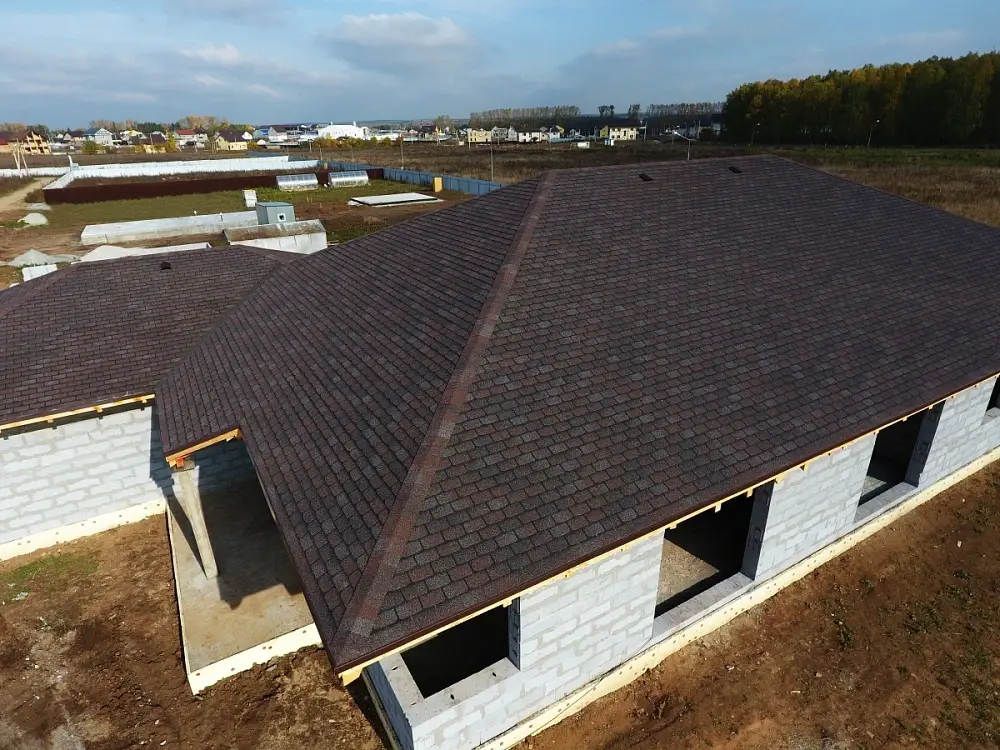
Conclusion
Metal roofing is a popular choice for homeowners and businesses alike due to its durability and longevity. When it comes to determining the thickness of metal roofing, there are several factors to consider. The thickness of metal roofing is typically measured in gauge, with a lower gauge indicating a thicker metal. However, it is important to note that the thickness of metal roofing can vary depending on the specific type of metal used and the manufacturer’s specifications.
One of the key considerations when determining the thickness of metal roofing is the intended use and location of the roof. In areas with harsh weather conditions, such as heavy snowfall or high winds, a thicker gauge metal roofing may be recommended to ensure the roof can withstand these elements. Additionally, the slope of the roof can also impact the required thickness, as steeper roofs may require thicker metal to prevent water pooling and potential leaks.
Another factor to consider when determining the thickness of metal roofing is the desired aesthetic and style. Thicker gauge metal roofing can provide a more substantial and robust appearance, which may be preferred for certain architectural styles or to create a statement look. On the other hand, thinner gauge metal roofing can offer a sleek and modern aesthetic, making it a popular choice for contemporary designs.
It is also worth noting that the thickness of metal roofing can impact its cost. Thicker gauge metal roofing generally comes at a higher price point due to the increased amount of material required. However, investing in a thicker gauge metal roofing can provide long-term cost savings by reducing the likelihood of repairs or replacements in the future.
In conclusion, the thickness of metal roofing is an important consideration when choosing the right roofing material for your needs. Factors such as the intended use, location, desired aesthetic, and budget should all be taken into account when determining the appropriate gauge for your metal roofing. Consulting with a professional roofing contractor can help ensure that you select the right thickness to meet your specific requirements and provide a durable and long-lasting roofing solution.



